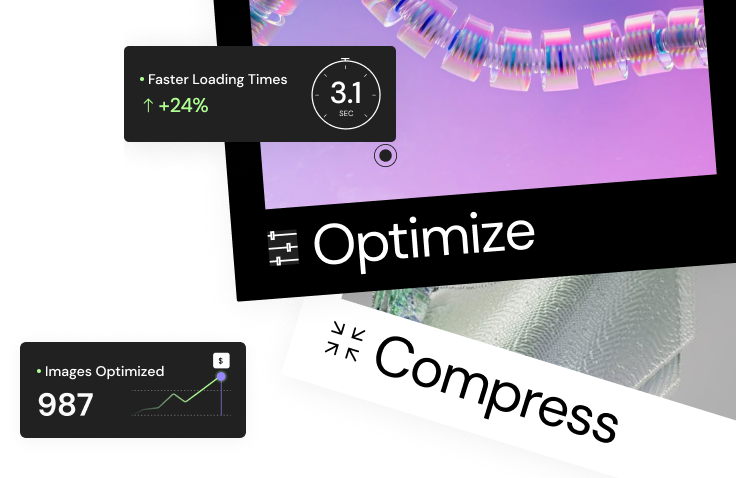Understanding the Variables: What Influences Startup Costs?
Before we talk numbers, you need to understand that there’s no single magic figure for startup costs. The total amount varies significantly based on several key factors. Getting a handle on these variables represents the first step towards creating an accurate budget for your specific venture.
- Business Model: Are you offering services, selling physical products, operating purely online, or opening a brick-and-mortar store? A freelance graphic designer working from home will have vastly different startup costs than someone opening a restaurant or launching an e-commerce brand with inventory.
- Industry: Some industries naturally require more upfront investment than others. Think about regulated fields like finance or healthcare, which involve significant compliance costs. Or consider manufacturing businesses that need expensive machinery. Contrast this with a consulting business, which might primarily need only a laptop and internet connection.
- Location: Where you set up shop matters immensely. Rent for commercial space in major cities like New York or San Francisco is significantly higher than in smaller towns. Labor costs, local taxes, and permit fees also vary greatly by state and municipality. Even for online businesses, your legal registration state can impact fees.
- Scale: Are you launching as a solopreneur, or do you plan to hire a team from day one? The size and scope of your initial launch directly impact costs related to salaries, office space (if needed), and equipment. Starting lean usually means lower initial costs.
- Legal Structure: How you legally structure your business affects your registration fees, ongoing compliance requirements, and tax obligations. Common structures include Sole Proprietorship, Partnership, Limited Liability Company (LLC), S-Corp, and C-Corp. An LLC or corporation generally costs more to set up than a sole proprietorship.
The specific nature of your business – its model, industry, location, intended scale, and legal setup – fundamentally shapes your startup budget. Acknowledge these factors early on to avoid surprises.
Grow Your Sales
- Incredibly Fast Store
- Sales Optimization
- Enterprise-Grade Security
- 24/7 Expert Service
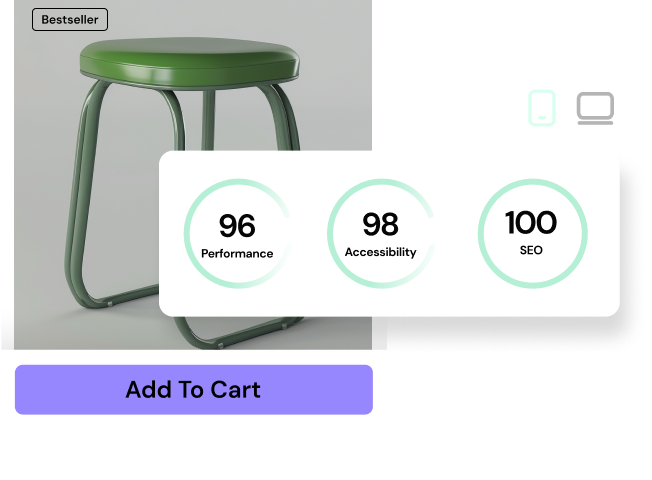
- Incredibly Fast Store
- Sales Optimization
- Enterprise-Grade Security
- 24/7 Expert Service
- Prompt your Code & Add Custom Code, HTML, or CSS with ease
- Generate or edit with AI for Tailored Images
- Use Copilot for predictive stylized container layouts
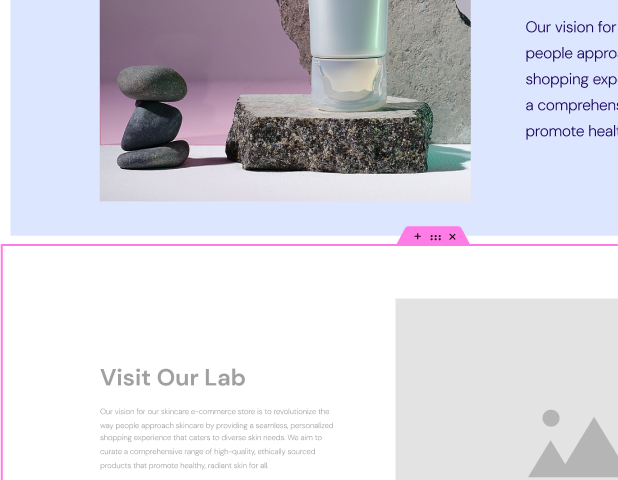
- Prompt your Code & Add Custom Code, HTML, or CSS with ease
- Generate or edit with AI for Tailored Images
- Use Copilot for predictive stylized container layouts
- Craft or Translate Content at Lightning Speed
Top-Performing Website
- Super-Fast Websites
- Enterprise-Grade Security
- Any Site, Every Business
- 24/7 Expert Service

Top-Performing Website
- Super-Fast Websites
- Enterprise-Grade Security
- Any Site, Every Business
- 24/7 Expert Service
- Drag & Drop Website Builder, No Code Required
- Over 100 Widgets, for Every Purpose
- Professional Design Features for Pixel Perfect Design
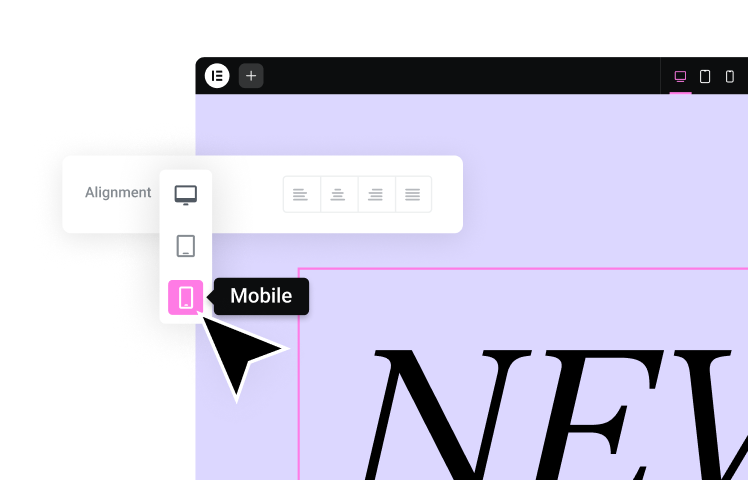
- Drag & Drop Website Builder, No Code Required
- Over 100 Widgets, for Every Purpose
- Professional Design Features for Pixel Perfect Design
- Marketing & eCommerce Features to Increase Conversion
- Ensure Reliable Email Delivery for Your Website
- Simple Setup, No SMTP Configuration Needed
- Centralized Email Insights for Better Tracking

- Ensure Reliable Email Delivery for Your Website
- Simple Setup, No SMTP Configuration Needed
- Centralized Email Insights for Better Tracking
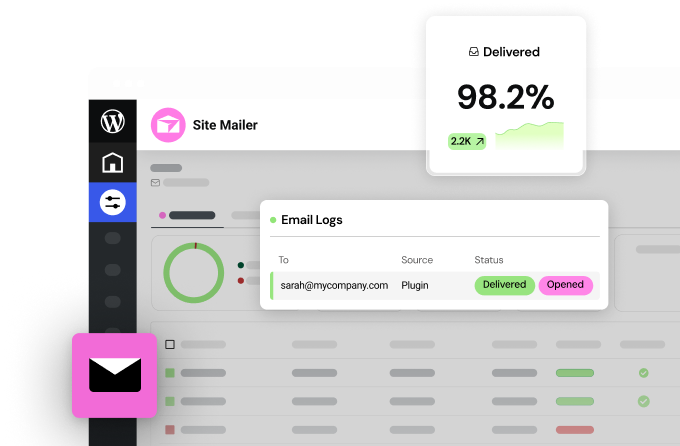
- Ensure Reliable Email Delivery for Your Website
- Simple Setup, No SMTP Configuration Needed
- Centralized Email Insights for Better Tracking
Core Startup Cost Categories
Alright, let’s get down to the nitty-gritty. We can generally divide startup expenses into two main buckets: one-time costs to get you off the ground and recurring costs to keep the lights on.
One-Time Costs (Getting Started)
These are the initial investments you’ll make before you even open your doors or land your first client.
Planning & Research
Don’t underestimate the value of solid planning. While you can do a lot of research yourself, sometimes you need specific tools or expertise.
- Market Research: Costs might involve subscriptions to industry reports or survey tools (like SurveyMonkey). You might even hire a market research firm for in-depth analysis. (Costs range from $0 for DIY efforts to $5,000+ for professional services).
- Business Plan Software: Tools like LivePlan or Bizplan can help structure your thoughts. However, many entrepreneurs successfully use templates or create their own plans. (Costs: $0 – $200).
- Consulting Fees: Perhaps you need advice from an industry expert or a business coach to refine your strategy. (Costs vary wildly, from a few hundred to several thousand dollars, depending on the scope and expert).
Legal & Administrative Fees
Getting your business legally established is non-negotiable.
- Business Registration: This involves filing your business name (DBA or “Doing Business As”) or registering your legal entity (LLC, Corporation). Costs vary by state. (LLC filing fees often range from $50 – $500).
- Licenses & Permits: Depending on your industry and location, you’ll need specific federal, state, and local licenses or permits. Examples include health permits for food businesses or professional licenses. (Costs are highly variable: $50 – $1,000+).
- Legal Consultation: We highly recommend seeking legal advice, especially for choosing a legal structure, drafting contracts, or understanding compliance. Lawyers typically charge hourly rates ($150 – $500+/hour) or offer flat-fee packages for entity formation ($500 – $2,500+).
- Trademark Registration: This protects your brand name or logo at the federal level. (USPTO fees start around $250-$350 per class, plus potential attorney fees).
Initial Equipment & Supplies
This category depends heavily on your business type.
- Office Basics: Computer, printer, desk, chair. (Costs: $500 – $2,500+ per workstation).
- Specialized Machinery: Essential equipment for your operations, such as kitchen appliances for a cafe, manufacturing tools, or diagnostic equipment. This can be one of the largest expenses. ($1,000 – $100,000+).
- Initial Inventory: If you’re selling products, you need stock to sell. (Costs depend highly on product cost and volume, potentially $1,000 – $50,000+).
- Software: Initial purchase of essential software licenses, if they are not subscription-based.
Branding & Website Development
In 2025, your online presence is critical, even for local businesses.
- Logo Design & Brand Guidelines: Professional branding establishes credibility. (Costs range from $50 for basic online tools to $500 – $5,000+ for professional designers or agencies).
- Website Setup: This is a cornerstone investment.
- Domain Name: Your web address (e.g., yourbusiness.com). Typically costs $10 – $20 per year.
- Web Hosting: Where your website files live. Shared hosting starts around $3 – $15 per month. More robust options like VPS or managed WordPress hosting can cost $25 – $100+ per month.
- Platform: WordPress is a popular, flexible, and free content management system (CMS).
- Theme/Page Builder: While free themes exist, premium themes or powerful page builders offer more customization and functionality. Tools like Elementor Pro provide extensive design control, pre-built templates, and essential features like form builders and theme building capabilities. This often reduces the need for multiple extra plugins and represents excellent value. (Elementor Pro plans typically start around $59 per year for one site).
- Content Creation/Copywriting: Writing compelling website text. (Costs: $0 if DIY, $500 – $5,000+ for professional copywriters).
- Initial SEO Setup: Basic keyword research and on-page optimization. (Costs: $0 if you learn and DIY, $500 – $2,000+ for an initial SEO package).
Initial Marketing & Advertising
You need to let people know you exist!
- Launch Campaigns: Initial ad spend on platforms like Google Ads or social media (Facebook, Instagram, LinkedIn). (Budget: $500 – $5,000+ depending on strategy).
- Signage: For brick-and-mortar businesses. (Costs: $100 – $2,000+).
- Printed Materials: Business cards, flyers, brochures. (Costs: $50 – $500).
Office Space Setup (if applicable)
For businesses needing a physical location beyond a home office.
- Security Deposit & First Month’s Rent: Often a significant upfront cost. Highly location-dependent ($1,000 – $10,000+).
- Renovations/Setup: Customizing the space to fit your needs, like painting or furniture installation. (Costs: $0 – $20,000+).
One-Time Costs Summary: These initial expenses get your business operational. They require careful planning and often consume the bulk of your starting capital. Don’t forget essentials like legal setup and a professional online presence.
Recurring Costs (Keeping the Doors Open)
Once launched, you’ll face ongoing monthly or annual expenses to sustain operations. Budgeting for these is crucial for long-term survival.
Rent/Mortgage
If you have a physical location, this is likely a major monthly expense.
Salaries & Benefits
If you have employees, this includes:
- Wages/Salaries: Your largest labor cost.
- Payroll Taxes: Employer contributions for Social Security, Medicare, and unemployment taxes.
- Workers’ Compensation Insurance: Required in most states.
- Health Insurance & Other Benefits: Increasingly expected by employees.
Utilities
For physical locations or even robust home offices: electricity, water, gas, internet service. ($100 – $1,000+ per month depending on size and usage).
Software & Subscriptions
Many essential business tools operate on a subscription model (SaaS – Software as a Service).
- CRM (Customer Relationship Management): Tools like HubSpot, Salesforce, or Zoho. ($15 – $150+ per user/month).
- Accounting Software: QuickBooks Online, Xero, FreshBooks. ($15 – $60+ per month).
- Project Management Tools: Asana, Trello, Monday.com. (Free plans available; paid plans cost $10 – $25+ per user/month).
- Website Maintenance: Includes hosting renewal, domain renewal, and premium plugin/theme updates. Elementor Pro includes updates and support within its subscription, simplifying this aspect. ($20 – $100+ per month total).
- Marketing Tools: Email marketing services (Mailchimp, ConvertKit), SEO tools (SEMrush, Ahrefs), social media schedulers. ($50 – $500+ per month).
Marketing & Advertising
Ongoing efforts to attract and retain customers.
- Digital Ad Spend: Google Ads, social media ads. (Budget varies greatly, $100 – $10,000+ per month).
- SEO Services: Ongoing optimization and content creation. ($500 – $5,000+ per month).
- Social Media Management: Tools or agency fees. ($100 – $2,000+ per month).
- Content Marketing: Blog writing, video creation. ($100 – $3,000+ per month).
Inventory (if applicable)
Constantly needing to replenish stock for e-commerce or retail businesses. Costs depend entirely on sales volume and product cost.
Insurance
Beyond workers’ comp, you’ll likely need:
- General Liability Insurance: Protects against third-party claims like accidents or injuries.
- Property Insurance: Covers damage to your physical assets.
- Professional Liability (Errors & Omissions): Important for service-based businesses.
- (Costs: $400 – $2,000+ per year, depending on coverage and risk).
Taxes
Plan for various taxes throughout the year.
- Income Tax: Federal and state taxes on profits. Businesses often pay these quarterly as estimated taxes.
- Sales Tax: Collected from customers and remitted to the state (if applicable).
- Payroll Taxes: As mentioned previously under Salaries & Benefits.
Professional Fees
Ongoing need for expert advice.
- Accountant/Bookkeeper: For managing finances and tax preparation. ($100 – $500+ per month).
- Lawyer: For ongoing legal advice or contract review. (Retainer or hourly fees).
Recurring Costs Summary: These ongoing expenses are the lifeblood of your business. Underestimating them can quickly lead to cash flow problems. Careful tracking and budgeting are essential.
Overall Core Costs Summary: Starting a business involves both significant upfront investments and continuous operational expenses. Understanding each category helps you build a comprehensive financial picture.
Estimating Your Specific Startup Costs: A Practical Approach
Okay, theory is great, but how do you estimate costs for your specific business idea? Here’s a step-by-step process:
Step 1: List Everything You Can Think Of
Go through the categories above (One-Time and Recurring). Brainstorm every single potential expense related to your business. Be exhaustive. Think about software, supplies, travel, coffee for client meetings – everything. Don’t filter yet; just list.
Step 2: Research Realistic Prices
This step requires real work. For each item on your list, research actual costs.
- Get quotes from vendors (e.g., insurance agents, equipment suppliers, web designers).
- Check supplier websites for pricing (software subscriptions, materials).
- Look up average salaries for roles you plan to hire in your location.
- Research commercial rent prices in your target area.
- Check state and local government websites for license and permit fees.
- Be specific to your situation. Don’t just guess.
Step 3: Differentiate One-Time vs. Recurring
Organize your researched costs into the two main buckets: One-Time and Recurring (monthly or annual). This separation helps you understand your initial capital needs versus your ongoing operational budget.
Step 4: Prioritize – Needs vs. Wants
Look at your list critically. What is absolutely essential to launch your business (your Minimum Viable Product or Service)? What is nice-to-have but could wait until you generate revenue?
- Need: Business registration, a basic website, essential equipment.
- Want: Fancy office furniture, a top-tier software plan (when a basic one works), a large initial ad campaign (maybe start smaller).
- Be honest with yourself to control your initial cash outlay.
Step 5: Build a Contingency Fund (Crucial!)
Things always seem to cost more than expected. Unexpected issues arise. Include a buffer in your budget for these surprises.
- Recommendation: Add 10% to 20% on top of your total estimated startup costs as a contingency fund. Don’t skip this step!
Example Scenarios (Illustrative Ranges for 2025)
These are highly simplified estimates to give you a rough idea. Your actual costs will certainly vary.
| Business Type | Estimated One-Time Costs (Low-High) | Estimated Monthly Recurring Costs (Low-High, Excl. Owner Draw) | Key Cost Drivers |
| Freelancer (Home-Based) | $500 – $3,000 | $50 – $500 | Laptop, Software Subscriptions, Business Registration, Marketing |
| Small E-commerce Store | $2,000 – $25,000+ | $200 – $3,000+ | Inventory, Website/Platform Fees, Marketing/Ads, Shipping Supplies, Software |
| Local Cafe/Small Retail | $25,000 – $150,000+ | $3,000 – $15,000+ | Rent, Renovations, Equipment, Inventory, Staffing, Permits, Utilities, Marketing |
| Software Startup (SaaS) | $10,000 – $100,000+ | $1,000 – $20,000+ | Development Talent, Hosting/Infrastructure, Marketing/Sales, Software Tools |
Building your budget is an active process. You need to list, research, categorize, prioritize, and add a safety net. Use realistic figures specific to your venture.
Smart Strategies to Minimize Startup Costs
Worried about the numbers? Don’t despair. You can use plenty of strategies to launch your business more affordably, especially in the early stages.
- Start Small & Scale Up: Don’t try to be everything to everyone from day one. Launch with a core offering. Then, expand as you grow and learn.
- Leverage Free & Freemium Tools: Many software tools offer free starting plans (CRM, project management, email marketing, design tools like Canva). Use them until you genuinely need paid features.
- Consider Remote Work or Co-working: Skip the expensive office lease initially. Work from home or use a flexible co-working space membership when needed.
- DIY Where Possible (But Know Your Limits): Can you design your own simple logo? Can you build your own website? Tools like Elementor make website creation incredibly accessible. They allow you to build a professional-looking site without hiring a costly developer, especially for initial versions. However, know when to call in experts (e.g., for legal advice or complex accounting).
- Negotiate with Suppliers: Don’t hesitate to ask for discounts, especially for bulk orders or long-term commitments (once you’re established).
- Focus on Lean Operations: Constantly evaluate expenses. Cut anything that isn’t providing clear value. Avoid vanity metrics and unnecessary overhead.
- Barter Services: Can you trade your services with another business owner? Perhaps you offer marketing help in exchange for accounting services.
- Seek Grants or Small Business Loans: Explore options like SBA loans (Small Business Administration) or industry-specific grants. These often have favorable terms compared to traditional bank loans but require thorough applications.
Being resourceful and adopting a lean mindset can significantly reduce your initial funding requirements. You can often do this without compromising your launch.
The Hidden Costs of Starting a Business
Beyond the obvious budget line items, be aware of less tangible or unexpected costs.
- Your Own Time (Opportunity Cost): Especially in the early days, you’ll likely work long hours for little or no pay. What could you be earning elsewhere? Factor this “sweat equity” into your calculations.
- Unexpected Repairs or Replacements: Equipment breaks down. Software glitches happen. Your contingency fund helps cover these issues.
- Scope Creep: Projects (like website development or marketing campaigns) tend to grow larger and more expensive than initially planned if you don’t manage them carefully.
- Employee Turnover/Training Costs: Hiring is expensive, but replacing an employee (due to recruitment time and training needs) also costs money.
- Slow Sales Periods: It might take longer than expected to gain traction and generate consistent revenue. You need enough cash runway to survive these initial months or unexpected dips later.
Anticipating these less obvious expenses is vital. Pay special attention to the need for sufficient cash runway and a contingency fund. This preparation helps you survive the unpredictable nature of starting a business.
Your Website: A Crucial Investment
Let’s circle back to your online presence. In 2025, it’s rarely optional. Your website often serves as your digital storefront, primary lead generation tool, and credibility anchor.
- Why it Matters: A professional, functional website builds trust. It attracts customers through search engines (SEO), captures leads (via forms), and can even process sales directly (e-commerce). A poor website experience can actively drive potential customers away.
- Cost Factors Revisited: You can DIY, hire a freelancer, or engage an agency. Costs range dramatically based on complexity and who builds the site.
- Empowerment Through Tools: This is where platforms like WordPress combined with page builders like Elementor truly shine for entrepreneurs.
- Control: Elementor’s visual drag-and-drop interface gives you remarkable control over your site’s design and layout without needing to write code. You can achieve a custom look that reflects your brand.
- Functionality: Elementor Pro includes widgets for essential functions like contact forms, call-to-action buttons, sliders, testimonials, and pricing tables. It even offers integrations with popular marketing tools. This often eliminates the need to buy and manage separate plugins.
- Scalability: Start with a simple brochure site. Later, you can easily add more features like a blog, portfolio, online store (using Elementor’s WooCommerce Builder), or landing pages for marketing campaigns.
- Cost-Effectiveness: Compared to hiring a developer for every minor change or paying for numerous single-function plugins, an Elementor Pro subscription offers a comprehensive toolkit at a predictable annual cost. You gain independence and save money, particularly if you’re willing to invest some time in learning the tool.
Your website isn’t just an expense; it’s a strategic asset. Utilizing modern tools like Elementor allows founders to create powerful, professional websites cost-effectively. It puts control directly in their hands.
Conclusion: Planning for Success
So, how much does it cost to start a business in 2025? As we’ve seen, the answer is “it depends.” Costs range from a few hundred dollars for a simple home-based service business to hundreds of thousands for ventures requiring significant physical infrastructure or inventory.
The key takeaways are:
- Costs Vary Widely: Understand the factors influencing your specific business.
- Planning is Non-Negotiable: Thoroughly research and list all potential one-time and recurring expenses.
- Budget Realistically: Differentiate needs versus wants, and always include a contingency fund.
- Be Resourceful: Employ smart strategies to minimize costs without sacrificing essential quality.
- Invest Wisely: Recognize that certain costs, like a professional website built with efficient tools, are investments that drive growth.
Starting a business is a marathon, not a sprint. Careful financial planning serves as your roadmap. It ensures you have the resources not just to launch, but to thrive. Take the time to build a detailed budget, stay lean where possible, and focus on creating value. Your entrepreneurial journey awaits! Good luck!
Looking for fresh content?
By entering your email, you agree to receive Elementor emails, including marketing emails,
and agree to our Terms & Conditions and Privacy Policy.
